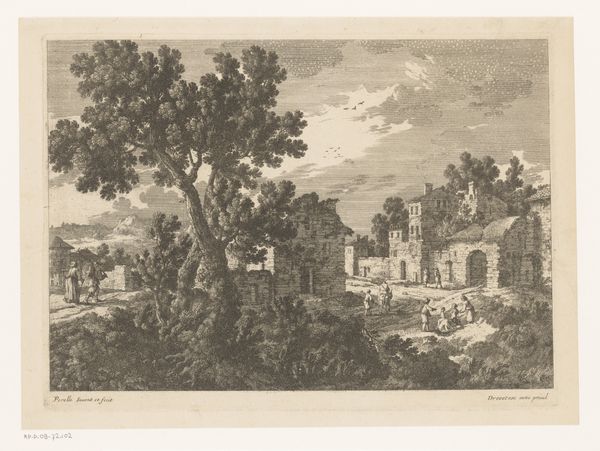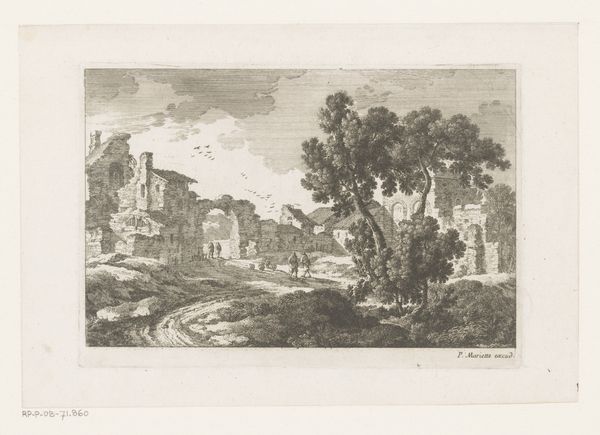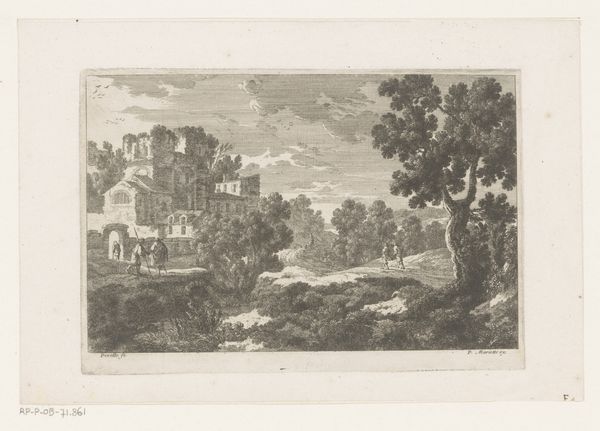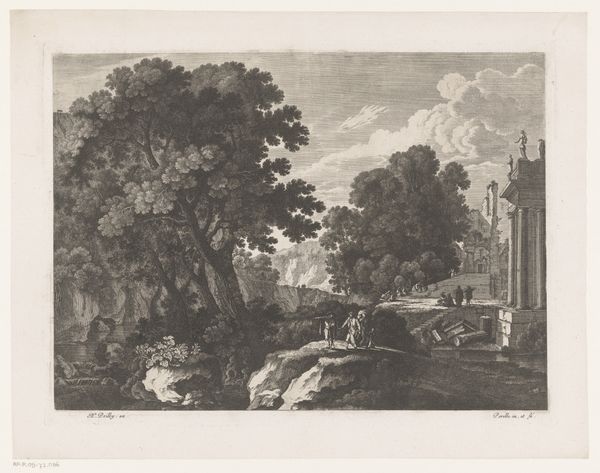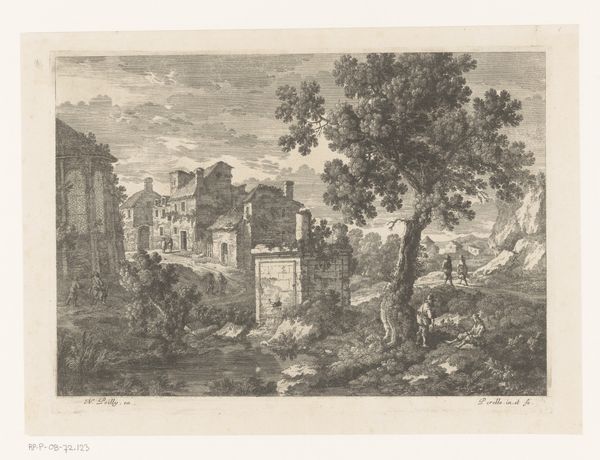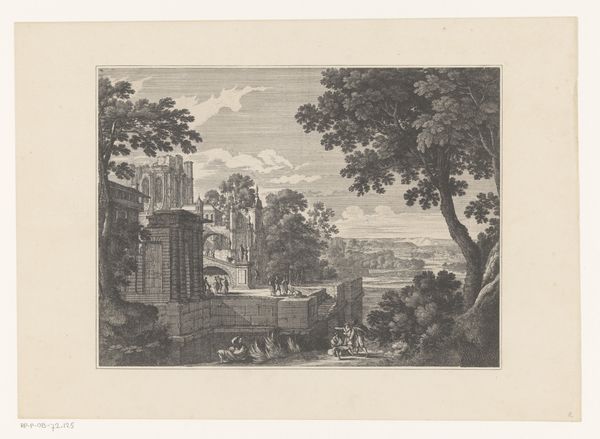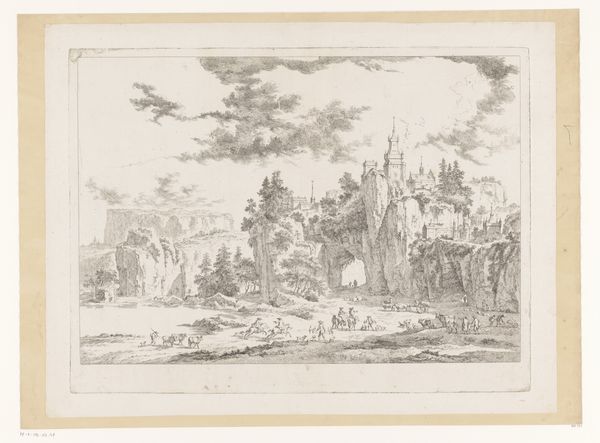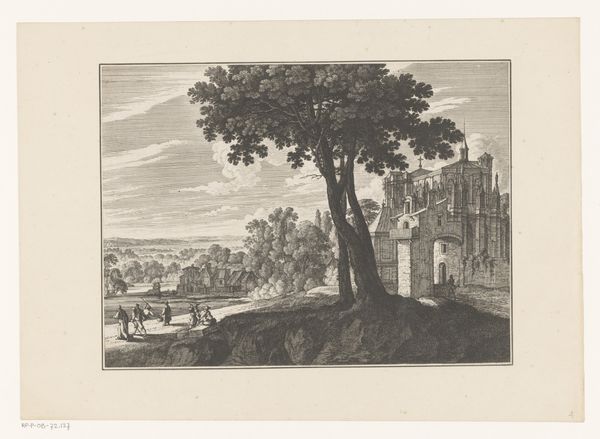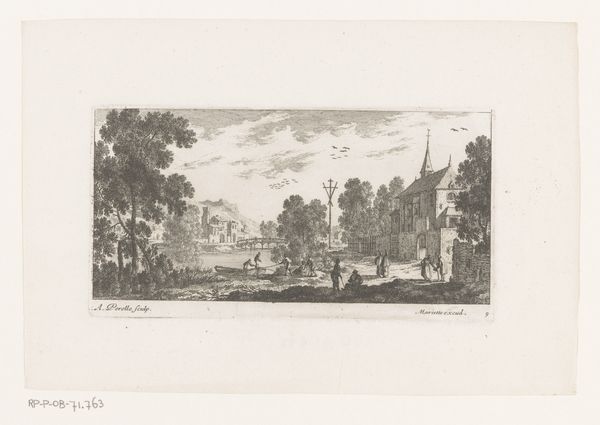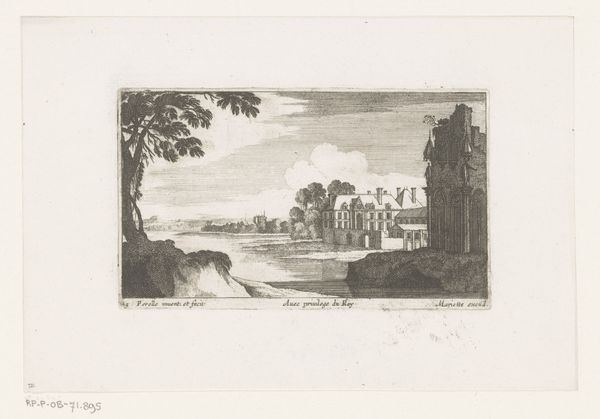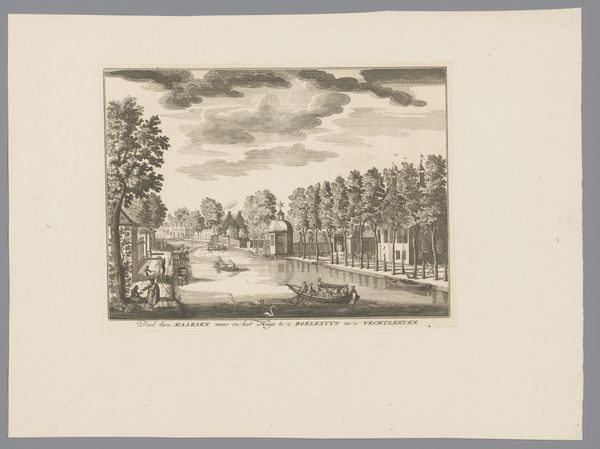
print, engraving
#
baroque
# print
#
old engraving style
#
landscape
#
cityscape
#
engraving
Dimensions: height 224 mm, width 323 mm
Copyright: Rijks Museum: Open Domain
Curator: Immediately, I’m struck by a feeling of stillness despite the obvious state of decay in this image. Like something profound is being reflected upon, despite—or perhaps because of—the destruction. Editor: What we have here is "Dorpsgezicht met ruïnes," or "Village Scene with Ruins" by Nicolas Perelle. Created sometime between 1613 and 1695, it's an engraving that depicts a village, well, with ruins! Currently, it resides in the Rijksmuseum's collection. Curator: The decay seems… romantic? See how the trees still flourish around the crumbling stone. I suppose nature always reclaims, and that act, if anything, creates new meaning. Also, this baroque feeling is clearly conveyed. Editor: Baroque art did have a fascination with the grandiose, often intertwined with themes of mortality and transformation. Ruins, of course, would fit squarely within those interests, especially given the sociopolitical climate during much of Perelle’s life, particularly the prominence of wars and the way they changed urban environments. What feels notable is how ordinary life carries on amidst this broken landscape; there are little figures doing everyday things as they navigate around or among the ruins. Curator: Exactly, which adds another layer, right? A kind of resilience. There is no way to keep on carrying about lives and trade exchanges between people in face of destructions if the inhabitants don't stand solid! And, despite being monochrome and seemingly barren in detail, the level of definition feels almost comforting because the details seem familiar...it has sort of a grounding effect. Editor: These cityscapes featuring ruins became quite popular. Think about how a city symbolized civilization, power, permanence—and then see those symbols destabilized and turned upside down. The image itself becomes a statement about empire, or against the very idea of stable empires, while at the same time trying to be appealing as an "art piece" to get the best commissions as possible. And remember: these images would be reproduced and circulated. Curator: This is really such an incredibly evocative little window into a different reality through something almost everyone faces at different points of his/her existence. We, today, looking back through time. Editor: Right, so many stories are woven into this one engraving. A perfect representation of the relationship between past and present, perhaps?
Comments
No comments
Be the first to comment and join the conversation on the ultimate creative platform.
